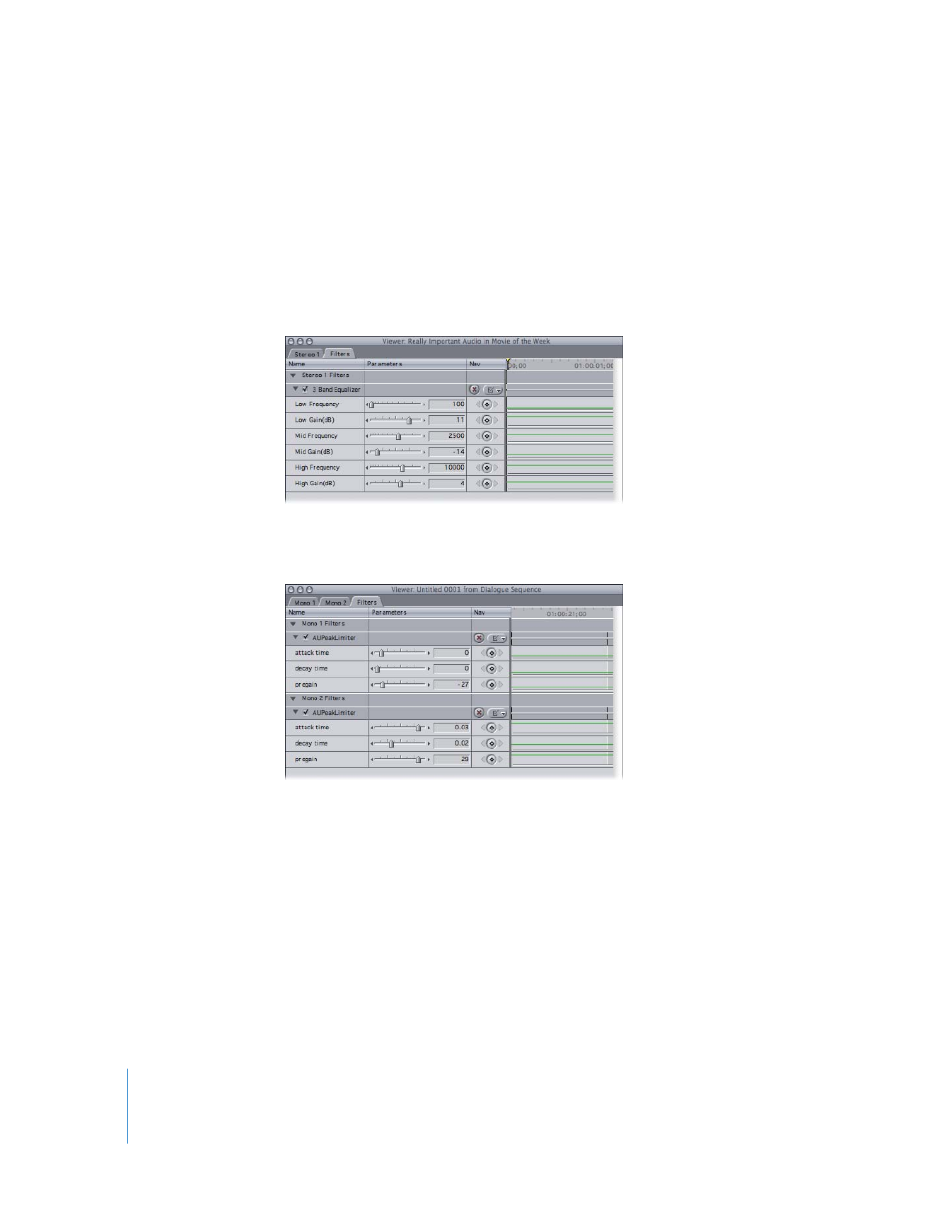
Echo and Reverberation Filters
Two of the “effects” filters you’ll use most frequently are the Echo and Reverberation
filters. You can use reverberation to add the reverberation effects of a particular
acoustic space to a sound that was recorded in isolation. Be careful not to add too
much reverberation because it muddies the clarity of the sound (especially dialogue)
and, more often than not, it can sound artificial. When possible, it’s best to rerecord
dialogue in the same, or similar, environment as the original production.
Echo filter settings
Reverberation filter
settings

Chapter 8
Using Audio Filters
161
I
Both Echo and Reverberation filter settings are described below:
 Effect Mix: This slider determines how much of the “dry,” or original, sound from the
audio clip is mixed with the affected audio. By keyframing this parameter over time,
you can make it sound as if someone were walking from far away in a room (where
there would be more reverberation) toward the microphone (where there would be
less reverberation the closer they came).
 Effect Level: This slider defines how loud the reverberation or echo effect will be.
 Brightness: This slider affects the quality of the reverberation or echo. Boosting this
parameter makes the effect seem more intense.
 Feedback: This slider (Echo only) affects how long the echoes produced by the filter
will last. As they repeat, they’ll interact with themselves to produce a complex series
of echo effects.
 Delay Time: This slider (Echo only) lets you determine the pause, in milliseconds,
between each echo. The longer the pause, the bigger the apparent space of
the environment.
 Type: This pop-up menu (Reverberation only) lets you specify the kind of acoustic
environment the filter will attempt to reproduce.

162
Part I
Audio Mixing